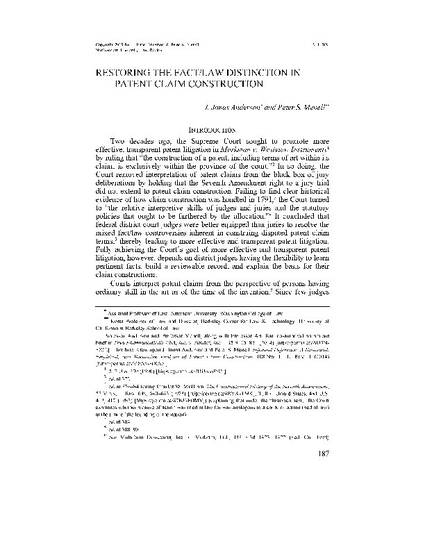
Article
Restoring the Fact/Law Distinction in Patent Claim Construction
Northwestern University Law Review Colloquy
(2015)
Abstract
INTRODUCTION: Two decades ago, the Supreme Court sought to promote more effective, transparent patent litigation in Markman v. Westview Instruments1 by ruling that "the construction of a patent, including terms of art within its claim, is exclusively within the province of the court."'2 In so doing, the Court removed interpretation of patent claims from the black box of jury deliberations by holding that the Seventh Amendment right to a jury trial did not extend to patent claim construction. Failing to find clear historical evidence of how claim construction was handled in 179 1,' the Court turned to "the relative interpretive skills of judges and juries and the statutory policies that ought to be furthered by the allocation."4 It concluded that federal district court judges were better equipped than juries to resolve the mixed fact/law controversies inherent in construing disputed patent claim terms,5 thereby leading to more effective and transparent patent litigation. Fully achieving the Court's goal of more effective and transparent patent litigation, however, depends on district judges having the flexibility to learn pertinent facts, build a reviewable record, and explain the basis for their claim constructions.
Keywords
- Patent Claims,
- Patent Law,
- Intellectual Property Law
Disciplines
Publication Date
March 9, 2015
DOI
http://dx.doi.org/10.2139/ssrn.2569204
Citation Information
Jonas Anderson. "Restoring the Fact/Law Distinction in Patent Claim Construction" Northwestern University Law Review Colloquy Vol. 109 (2015) p. 187 - 201 ISSN: 0029-3571 Available at: http://works.bepress.com/jonas_anderson/22/
